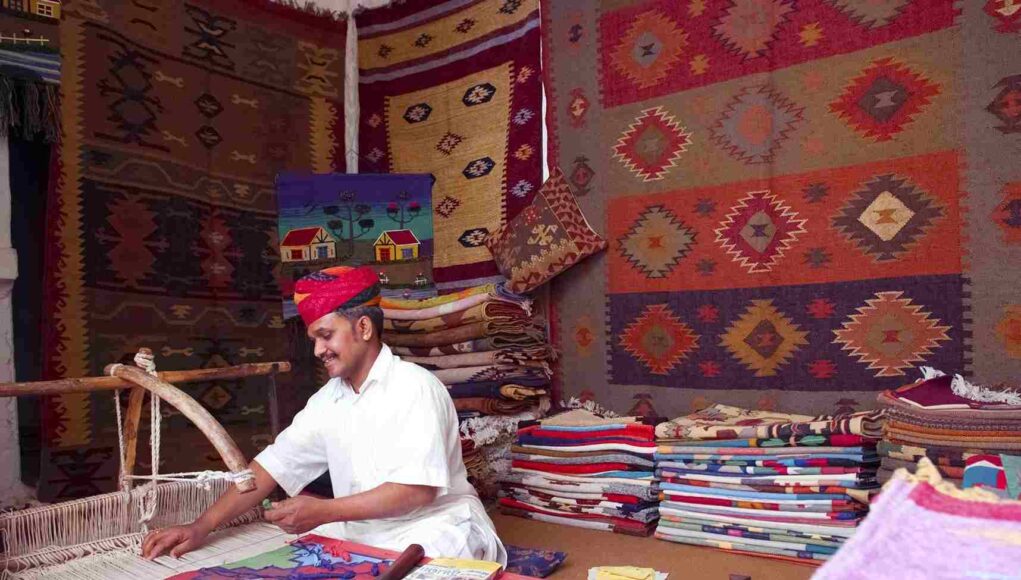Last Updated on June 27, 2023 by
India is known for its rich heritage and culture before the invasion of British Rule in the 1600s. People with a different language, different food habits, different attires, performing different customs, and celebrating different festivals, co-existed in India. But British Rule changed everything that was once treasured in this peaceful nation. The Indian economy underwent a major change that was not very favourable for the Indians whether they were businessmen, craftsmen or any other being. In simple words, the wings of this golden bird were cut down by the British empire for their benefit.
With a systematic plan, the native industries were brought to their knees. If anyone looks at the fact, the global production share of 25% was an Indian share before the invasion that was dumped into the ground to a mere 2% by the end of the 18th Century. The textile industries were decimated to the level of closing all the major artisanal work. Before that the Indian textile industries were all about producing pieces that were in demand all over the world. As a result of introducing new dye sources, refining weaving techniques, and including new floral design themes, the 16th century was known as the ‘Golden Age of Textile Production. Arts and crafts movements were widely supported by the Mughal courts, who housed vast collections of textiles, including woven, painted, and embroidered pieces.
The intricate patterns of Kalamkari weaving charmed the world and especially Europeans. The demand for this rich textile and spices made the Britishers establish the East India Company in Calcutta and Madras (today known as Kolkatta and Chennai). For supporting and creating a dominance of British Industries, they encouraged the production of raw cotton and indigo and any type of help and resources provided by the local artisans or textile producers were withdrawn. Also, they were bounded by the contract of exclusively selling to them at the price of peanuts. The textile sector in England transformed during the late 17th century thanks to the innovation of the spinning jenny, the Crompton mule spindle, the utilisation of copper plates rather than wooden boxes for printing, and printing machines with rollers. The machine production gave tough competition to the hand-spun fabrics as the machine made were cheap and were produced in bulk and affected the markets not only in Europe but also in India. The use of chemical colouring topped everything.
The slow and perfectionist Indian handlooms faced competition with copied designs made with machines. Also, various short-term strategies were brought into effect for destroying the artisanal work piece by piece.
- Enforcing violence: All those who did not adhere to the guidelines of British Rule, were treated like an animal. The workers faced a lot of violence while their produce was destroyed using some or other means used by the Colonial Viceroys. Moreover, those handmade pieces were seized and used in different manners like presenting gifts to the royals. In fact, some of the workers were imprisoned also under false pretences.
- Taxes and more taxes: The British government tried to cripple the Indian textiles in all possible ways. Different types of taxes were levied so that the textile manufacturers were buried in loans that they will never be able to repay, thereby destroying their business and the treasures of India.
- Industrial Innovation: With the introduction of several machines, dying techniques and chemical processes, the textile industry in England went through a revolution. All these processes simplified the production of fabrics and the clothes became cheap. Although most of the designs were mimicked still India became one of the leaders in the consumption of such garments. This led to the downfall of the pure fabrics manufactured in India.
- Strategic theft: The Indian weavers were looted and defrauded in a systematic way. The Great Indian Exhibition was organised in 1851 which showcased the motifs and patterns made by Indian weavers that came with Mughal rulers. The English designers stole the designs and made them using machines which made the outfits cheaper and affordable for everyone. More strength to the English dictatorship and loss to the Indian textiles.
These were the major driving factors that had put the Indian textile Industries to the ground. But with the swadeshi movement that took place in India under the leadership of Mahatma Gandhi, the plight of Indian Textiles was changed. The introduction of Charkha and making of our clothes and boycotting foreign fabrics and clothes helped in giving support to the Indian weavers and craftsmen. But it took a lot of courage, patience and power to again reach a stage where most of the resources were lost in the fight. Nevertheless, everything came under control with India sharing 11.4% of exports of apparel, handicrafts and textiles globally.















